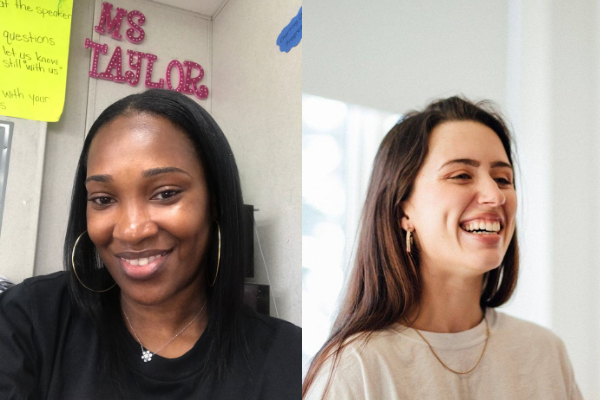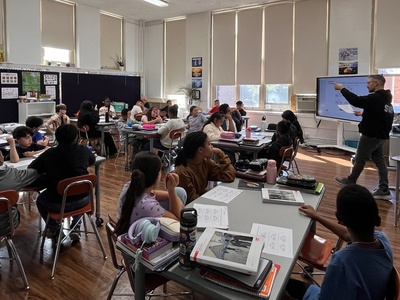Professional Learning
Creativity's Power to Transform the Learning Experience for Students and Teachers
Topics
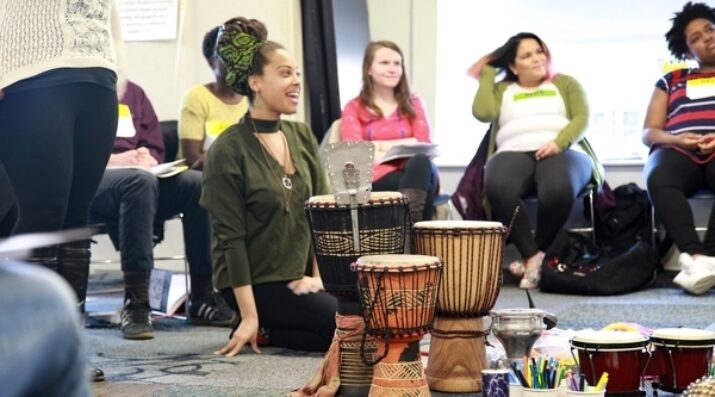
Educators are the lead learners in schools. If they are to enable powerful, authentic, deep learning among their students, they need to live that kind of learning and professional culture themselves. When everyone is part of that experiential through-line, that’s when next generation learning thrives.
Two Baltimore teachers reflect on their summer PD of arts-integrated math and literacy, filled with creativity, hands-on experience, self-expression, and connection.
Art covering walls, groups practicing mindfulness, free-writing sessions, collaborations with artists, performances, fits of laughter, and a healthy portion of positive energy. You might be surprised to learn that this describes a professional development program we experienced this summer along with more than 80 fellow Baltimore City public school teachers.
Delivered by the Baltimore-based nonprofit Young Audiences of Maryland, this PD was unlike any other we’ve had. Young Audiences, as President and CEO Stacie Sanders Evans described in a recent article, connects teaching artists with educators to bring creativity into the classroom, thereby changing the dynamic for students and teachers. We spent this summer exploring the arts integration teaching approach, creating lesson plans, reflecting on our work, and growing closer to the power of creativity.
The result: we’re heading into the new school year more inspired than stressed, more excited than anxious, and more ready than rusty after a summer filled with creative teaching and feedback from fellow educators and artists. We enter this year knowing that creativity can be a key to opening a learner’s mind, to changing the energy in a room, and to making education flexible and fun.
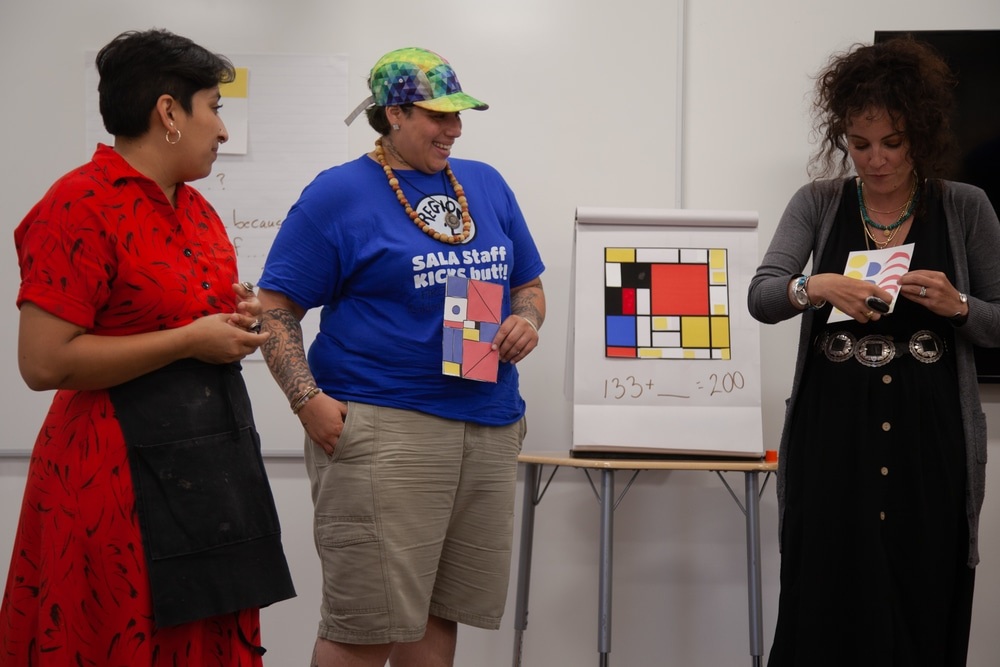
Teaching artist Nadia Rea Morales leads Baltimore City Public School teachers in an arts-integrated, Mondrian-inspired math lesson at Young Audiences' summer PD. (Courtesy of Young Audiences)
Collaboration, Demonstration, Reflection
Young Audiences’ summer PD did more than simply teach us about arts integration. It provided space to apply these ideas in real settings with peers and students at its Summer Arts and Learning Academy (SALA)—a free, five week arts-integrated program for Baltimore City Public School students.
To begin the PD, teachers and teaching artists created math and literacy arts-integrated lesson plans and demonstrated them to fellow educators for feedback. This gave us practice teaching and, more importantly, put us in the shoes of our students. We could see where a student might lose focus… because we did. We recognized where they might become confused… because we felt it. The experience was powerful and judgment-free. The group got to know each other through constant icebreakers and prompts to express ourselves; we felt comfortable and experienced our improvement together—a far cry from the typical presentation-based PD to which we’re accustomed.

Co-author Kelley Taylor works with third grade Baltimore City Public School students at Sandtown-Winchester Achievement Academy. (Courtesy of Kelley Taylor)
This was the first PD experience we’ve had where reflection was framed as essential. Throughout the summer, we were encouraged to reflect. We wrote postcards to our future selves at the beginning of the sessions, expressing our hopes for the experience. We practiced mindfulness, reflecting on our role, our work, and our approach. And for 10 minutes a day, we wrote freely about whatever we were thinking or feeling. Many of us shared our resulting perspectives, discussed goals, and opened ourselves up to the group.
Our SALA students also had a summer where learning and fun were seamlessly blended. They played drums to calculate fractions and performed theater and dance to convey what they had been reading. Classrooms were filled with laughter and excitement as students connected with each other, with us, and with the content. Like us, students began each morning practicing mindfulness and silent reflection; this centered the room and set a positive tone for the day. They also wrote freely, explored many art forms, and found themselves improving in math and literacy at the same time.
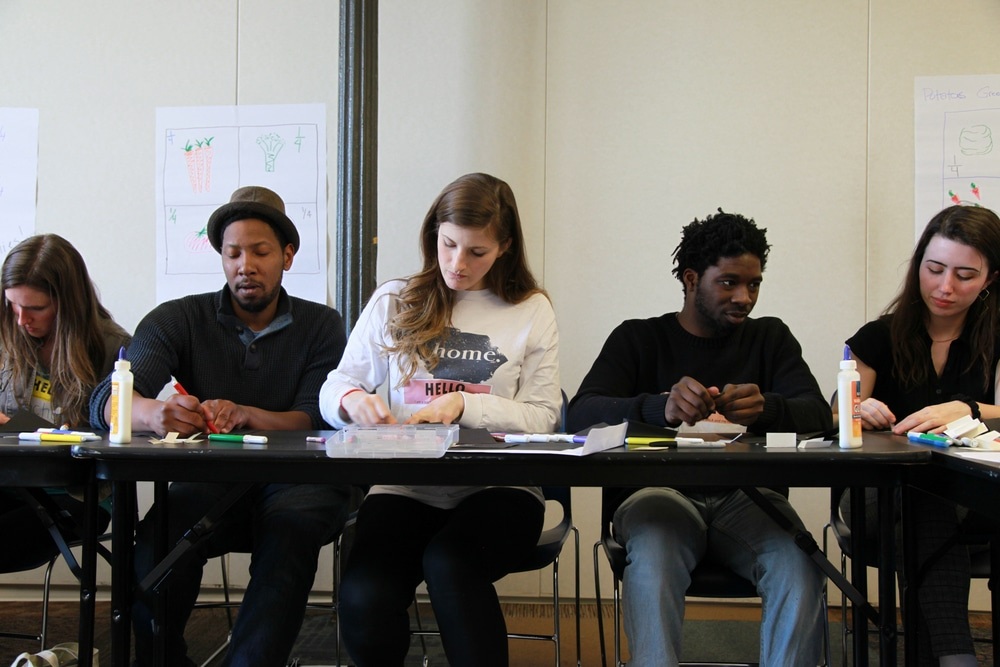
Co-author Holly Hornbeck (right) and fellow Baltimore City Public School educators create art to explore its integration into teaching at Young Audiences summer PD. (Courtesy of Young Audiences)
Creativity, Self-Expression, Connection
Here are a few lessons and reminders we took from our experience this summer:
- There is more than one way for a student to grasp content. As teachers, we need to teach in a way that allows for and encourages learning’s flexibility. Delivering content through a lens of creativity can open students’ minds in new ways.
- Self-expression fosters connection: As teachers well understand, getting to know students is crucial to most effectively impacting them. We found creativity and self-expression to accelerate that process. In one class, students created illustrations depicting their routes to SALA. Asking about what they had created helped us understand and discover more about their lives. Quieter students opened up and classroom environments were enlivened. The reason why is clear: reaching students where their interests are makes learning feel natural.
- Bring yourself to your work: This PD encouraged teachers to also bring their interests and talents to the classroom—to share the hobbies and passions that make us who we are. We ended the summer feeling open minded and connected to our teaching, understanding that if something is interesting and exciting to us, it will be apparent and inspiring to those we teach.
Thanks to this experience, this school year we’ll be using musical rhythm to deliver math content, incorporating performance to activate empathy, practicing and encouraging mindfulness, and creating spaces where students can express themselves and reset. This summer reinforced creativity’s power—in connecting with students, in growing as educators, and in changing the learning experience for the better. We can’t wait to bring this approach to our classrooms.
Photo at top, courtesy of Young Audiences: Baltimore City Public School teachers explore integrating rhythm and drumming into lessons while guided by teaching artist Christina Cook at Young Audiences' summer PD

